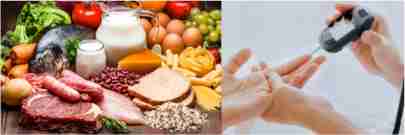India is often referred to as the diabetes capital of the world. How did it earn this dubious distinction, accounting for 17 per cent (approximately 420 million) of the world’s population afflicted by abnormal metabolism of carbohydrates and elevated blood glucose levels?
Is India’s diabetes epidemic driven by genetic or external factors? While the former does play a significant role, the latter, which manifests in lifestyle changes and dietary habits, is responsible for the spurt in Type 2 Diabetes (T2D) in the last two decades.
A recent study published in The Journal of Nutrition by a team from the Madras Diabetes Research Foundation (MDRF) has further narrowed down the causative factors. Their research, which incorporates findings and reviews from their earlier studies, pinpoints consumption of excessive carbohydrates from refined grains, deficiency in quality proteins, excess of unhealthy fats, low dietary fibre and reduced physical activity as key drivers of the T2D epidemic.
The researchers, while looking at south Indian diets, studied the dietary profile of 2,042 adults in Chennai and found food consumption heavily tilted towards carbohydrates. In fact, as much as 64 per cent of daily calories came from carbohydrates (mostly refined white rice), 24 per cent from fats, and only 12 per cent from proteins. The intake of micronutrient and fibre-rich fruits and vegetables was only 265 gm per day against the recommended 500 gm (350 gm vegetables and 250 gm fruits).
Carbohydrates in the form of cereals dominate diets across the country. While white rice is the staple in the south, east and northeast, wheat flour (atta) is consumed in the north, west and central regions of India. According to ‘What India Eats’, a 2020 study by Indian Council of Medical Research(ICMR) and National Institute of Nutrition (NIN), 97 per cent of adults in rural India and 67 per cent in urban areas consumed more than the recommended intake of cereals. In contrast, the share of energy from pulses, legumes, and animal foods was only 11 per cent. Only 9 per cent of adults in rural areas and 17 per cent in urban areas consumed sufficient vegetables. High-salt, high-fat, and energy-dense foods such as chips, chocolates, biscuits, and juices contributed to 11 per cent and 4 per cent of the total energy intake in urban and rural areas, respectively.
At-risk cases
The research cites a recent study by ICMR-India diabetes (INDIAB) that used mathematical modelling to determine that the ‘optimal macronutrient distribution’ for the prevention of T2D was 49–57 per cent carbohydrates (preferably complex carbohydrates), 16–20 per cent protein, 20–26 per cent fats, and 4–6 per cent dietary fibre for adults with pre-diabetes who are at risk of becoming diabetic.
Type 1 diabetes, a genetic condition in which the immune system attacks and destroys insulin-producing cells in the pancreas, sets in early in life and is managed by providing patients with regular doses of insulin. T2D is a lifestyle disease in which the body either fails to make sufficient insulin or does not utilise the insulin produced. T2D is controlled by switching to healthier diets, exercise, medication and, when required, by administering insulin.
Crucially, Type 1 diabetes accounts for about 8 per cent of diabetes cases, with Type 2 making up the rest. According to the MDRF study, during 1990-2016 the number of diabetes cases in India grew from 26 million to 65 million. Estimates from 2022 put this figure at 80 million, which is expected to rise to 135 million by 2045 if corrective steps are not taken.
The MDRF team’s research among adults in Chennai found that the highest intake of carbohydrates (587 gm per day) was associated with a five-fold increased risk of T2D when compared with the lowest intake (294 gm per day). The rising prices of pulses, legumes and animal products has resulted in lower protein intake and over-dependence on cheaper refined cereals.
A switchover to complex carbohydrates — whole wheat, brown rice, millets, and so on; a larger intake of proteins and fibre; and a reduction in consumption of saturated fats, trans fats, added salt and sugar have been recommended. But, unfortunately, healthy eating has become the privilege of the rich and health food an indulgence beyond the means of the common populace.
Source : The Hindu Businessline 02 April 2023

